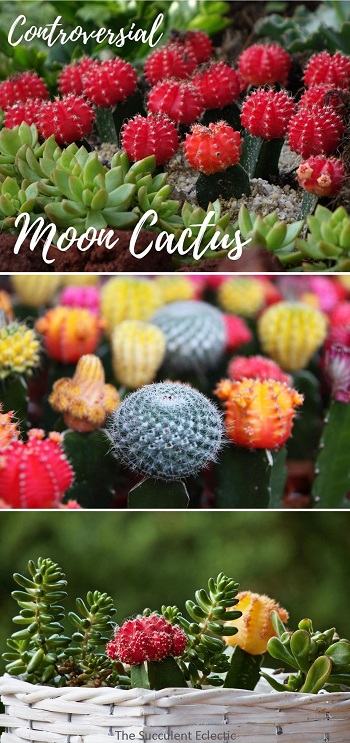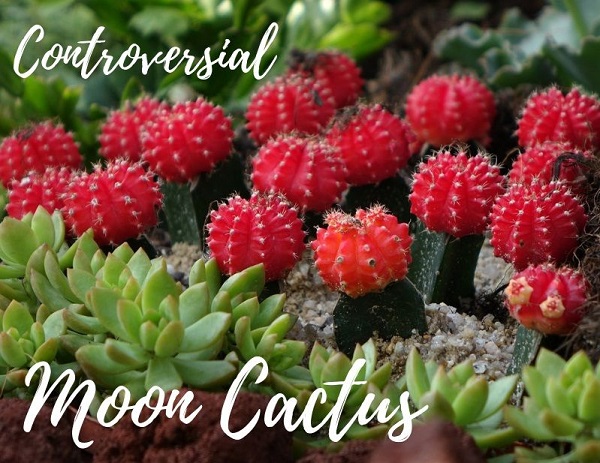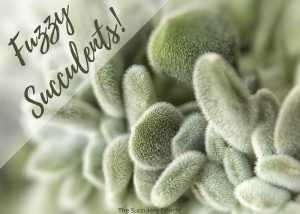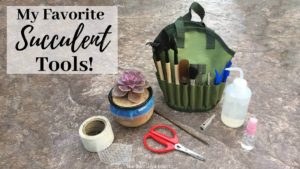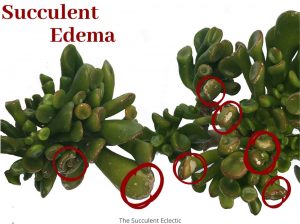Few legal plants are as controversial in the world of gardening as the popular moon cactus. What’s not to love? These charmers look like living lollipops with the straight, dark green “stick” and the boldly colored spherical top. They can live happily indoors year-round. Although loved by many and grown by more, most people don’t realize these are grafted cacti, formed by two entirely different varieties — Gymnocalycium mihanovichii and Hylocereus — and made to grow into a single plant. As a result, moon cactus are short-lived — made so by their peculiar biology. You need to better understand what you’re getting with these plants to best enjoy them.
Grafted Cactus Gymnocalycium & Hylocereus
In this Post We'll Cover:
{Please note, some links in this post may be affiliate links to sites that pay me a small commission if you click on the link and make a purchase. This commission is at absolutely no cost to you. I only recommend products and companies that I have worked with and truly love! ~Kat}
What is a Moon Cactus
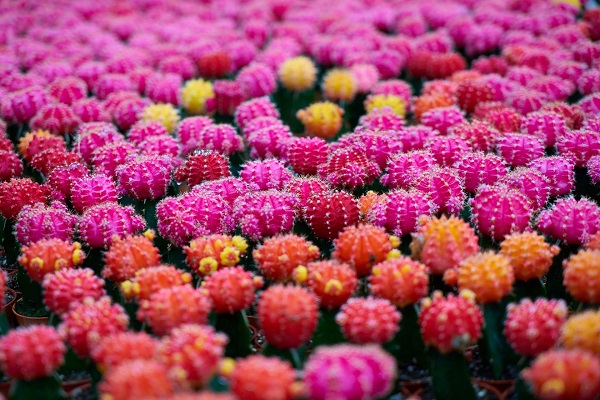
Gymnocalycium mihanovichii is a handsome, miniature cactus native to South America that grows just 4-inches tall and 5-inches broad. They are nearly spherical, with 8-14 ribs, typically grey-green in color with burgundy accents, short, bristly spines and white tufted points. The vibrantly colored varieties all date back to a single nurseryman in Japan in 1940. Out of 10,000 grey-green Gymnocalycium seedlings, two showed some intriguing reddish coloring. His efforts to hybridize these seedlings for more brilliant coloring were wildly successful.
However, what makes these Gymnocalycium mihanovichii so colorful is the complete lack of a critical pigment — chlorophyll. Chlorophyll is the green pigment that enables photosynthesisPhotosynthesis (FO-to-SIN-thuh-sis) is the process plants us... More. It enables plants to convert sunlight into energy, to feed themselves. Without green chlorophyll, the other pigment colors in the plant
Today, roughly 15 million grafted cactus are traded internationally — the vast majority of them moon cactus that have been developed and produced in South Korea. They represent brilliant shades of yellow, red, orange, pink, coral, peach, purple and white. Most frequently, they are formed by grafting a brightly colored Gymnocalycium mihanovichii to a piece of Hylocereus — a climbing form of cactus that can reach 30 feet tall.
What is a Grafted Cactus?
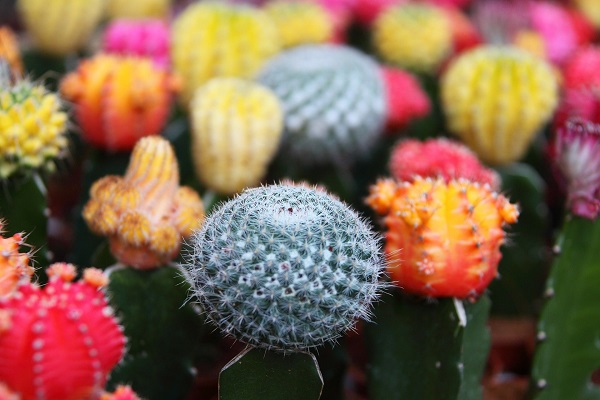
Grafting is a technique in horticulture that takes two plants and joins them, forcing them to grow into a single whole with properties of both. For instance, fruit trees are grafted to get tastier fruit produced on hardier rootstock. Grafting is widely used in most fruit trees, tomato plants, rose bushes and many more. The plant chosen for its ornamental or fruiting qualities is grown atop another plant chosen for its health, vigor and ability to thrive in specific growing conditions. The top plant is called the scion, and the bottom is called the rootstock. In the case of the grafted cactus pictured here, the scion is the colorful Gymnocalycium mihanovichii and the vigorous rootstock is from a Hylocereus. But you can graft any compatible varieties of cactus.
Many grafted plants will enjoy a long life. But this longevity depends upon how compatible the scion and the rootstock are in a range of ways. And in the case of moon cactus, the compatibility issues doom these popular plants within just a few years. Gymnocalycium maxes out at just a few inches, while the Hylocereus grows up to 30 feet. These disparate growth patterns make it difficult to get the watering right for both succulent plant parts. Even with proper watering, in time the rootstock will outgrow the scion. While there are reports of moon cactus remaining healthy for as long as five years, a couple of years is considered good, and often, the plants die in just a few months.
When half of a moon cactus fails, the only way to save the remaining half is to cut the plant apart. If the base remains healthy, cutting off the top is all you need for the rootstock to continue to grow and thrive. If it is the colorful scion of your moon cactus you want to save, you likely will have to graft it to another cactus for it to survive. Sometimes, the purple
Gymnocalycium scions do have enough chlorophyll in order to root and grow on their own. But all of the other colors from red to yellow to white will die — quickly — without being rooted
How to Graft a Moon Cactus
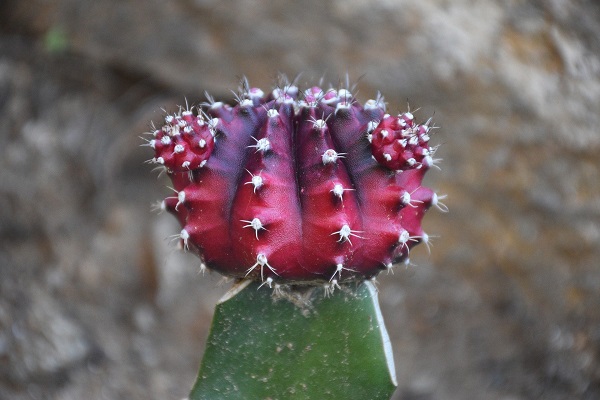
The grafting of two cactus plants is a pretty simple process. Always use sharp, sterilized instruments. Prepare the scion, by taking the top of a healthy plant. In the case of a moon cactus, slice the top of a Gymnocalycium mihanovichii off above its basal plate — where roots emerge. Prepare the rootstock by taking a 2-5-inch rooted stem from a Hylocereus, a Cereus or a Trichocereus cactus. Slice the top off the rootstock plant, and trim the edges to taper down to the size of the scion cut. In this image, you can see where the sides of the Hylocereus rootstock were cut to taper it to the size of the scion cut.
Now, place the scion on top of the rootstock with their freshly cut edges meeting. Using a rubber band or scotch tape placed over the top of the scion and around the bottom of the pot, secure the top of the graft to the bottom. Set the plant in bright, indirect light where it will be warm, and give it 2-3 weeks for the graft to take. This video is a good one for learning to graft cactus.
Isn’t it amazing that
Moon Cactus Care
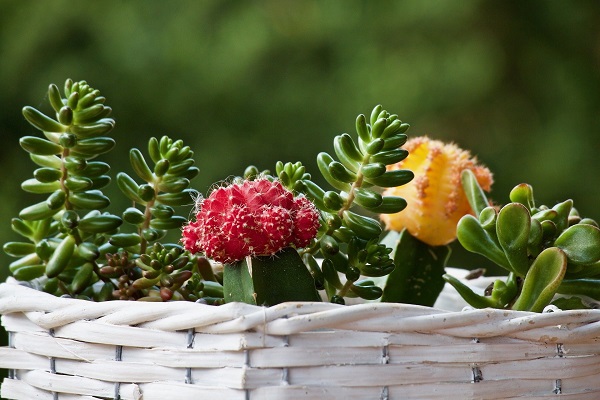
Watering
Moon cactus care is similar to caring for most cactus. Whether planting a solitary plant in its own pot or mixing it with other succulents, always grow your moon cactus in fast-draining succulent soil. Like with any other succulent, over-watering is the quickest way to kill your plant. Water only when the soil is quite dry, and water thoroughly when you do. Stop watering and leave the soil completely dry over the cold months of winter, even if your moon cactus is indoors. Resume watering come spring. If your graft is just a few months old, give a tiny bit of water during the winter months.
Lighting
Lighting for your moon cactus can be a bit tricky. Gymnocalycium mihanovichii is native to a shady habitat, where it can be found growing under larger plants. Without any chlorophyll, those bred for bright color are more vulnerable to sunburn. While Hylocereus can handle lower light, the plant flowers
Moon cactus will do best in bright, indirect light, and can be happy growing indoors year round. These plants are not cold hardy below 48° F (8.88° C) and thrive in typical room temperatures. Take care not to allow it to be in direct sun from a nearby window or it can burn.
Pruning a Moon Cactus
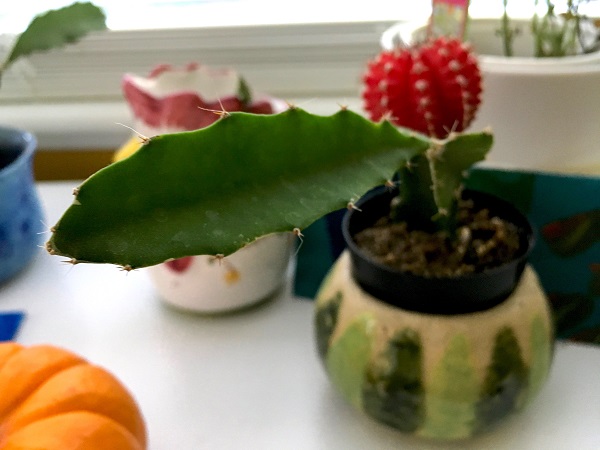
Sometimes, the moon cactus’ vigorous rootstock will branch and grow side shoots. When this happens, you must cut back the side growth to keep the
Hylocereus from rapidly outgrowing its colorful scion. Simply take sharp, clean pruning shears and snip it back to the stem. You now have a new stem that can be rooted to grow a whole new plant or to act as rootstock for a
Moon Cactus Flowers & OffsetsSucculent offsets are the baby succulents that form at the b...
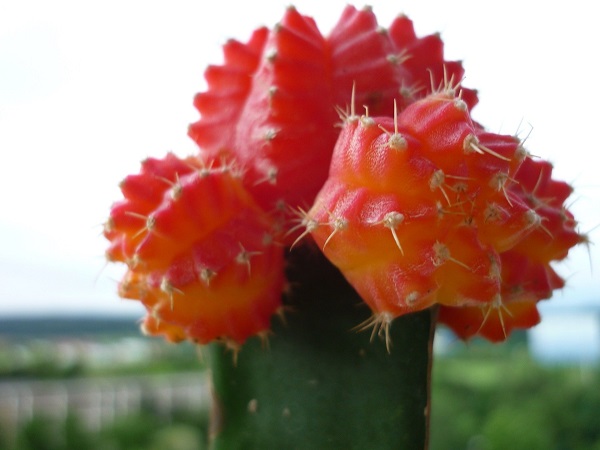
While many people mistake the colorful scion of a moon cactus for its bloom, moon cactus do flower in time. The daisy-like flowers are large and showy, with many petals that range from shades of pale pink to vibrant red.
Often, a moon cactus will develop small, roundish bumps, the same color as the scion, but brighter. These are not flower buds, but offsets. They start as bumps that develop into small spheres. Feel free to leave them in place. Or slice them off and graft onto a new rootstock. This is how you propagate moon cactus. In the case of a purple Gymnocalycium mihanovichii, try rooting a few of the offsets to see if they can make it on their own without a graft.
What is the Moon Cactus Controversy?
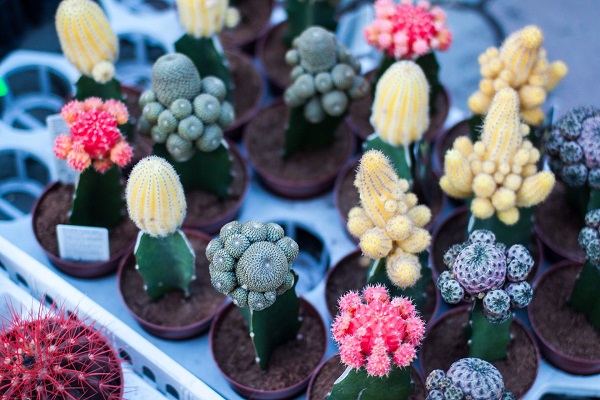
Is it hard to believe that such a cute little plant would be at the center of controversy? The moon cactus has many ardent admirers, and seemingly just as many energetic detractors. For those who love it, the plant is adorable. It is easy to grow and to care for, even indoors. Often a moon cactus is the first they ever own. I suppose it is sort of a gateway cactus! 🙂 Detractors consider it a “fake plant”, almost on a par with painted succulents or cactus with fake flowers glue on. They object to the grafting, the short life span and the hybridizing that creates so many cactus plants entirely incapable of living on their own.
I suppose I am somewhere in the middle. Moon cactus are not a personal favorite, but I can certainly appreciate their appeal. And any plant that encourages more people to grow and love succulents and cactus is aces in my book! However, their short life span worries me. It feels like people are set up to fail with this plant. But It is an easy plant to learn
Shopping for Moon Cactus
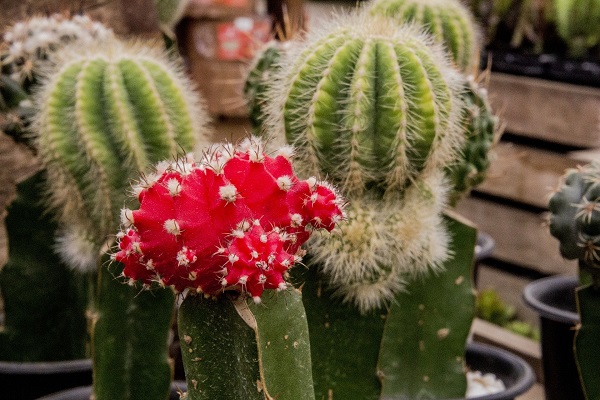
Most people will readily find an assortment of grafted moon cactus available to order at your local big box
So… where do you fit with the great moon cactus controversy? Will you be growing your own moon cactus, trying your own grafting or giving it all a miss? I would love to hear from you. Please leave me a comment and I’ll get right back to you. If you have any questions, I am happy to help — or to debate if need be!
Because life is just better with succulents!
P.S. Please subscribe to The Succulent Eclectic! I’ll send you my FREE e-course, 7 Steps to Succulent Success! Thank you!
